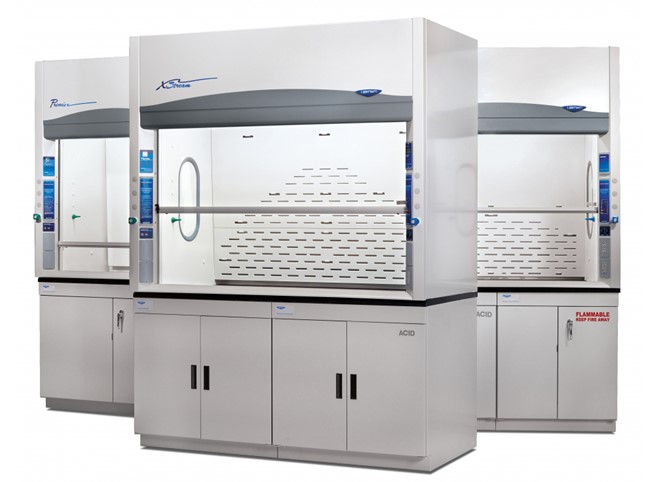Fume hoods (also known as fume cupboards or exhaust hoods) are a type of ventilation system used in laboratories and industrial settings. First deployed at the University of Leads in 1923, fume hoods are designed to contain and vent harmful vapors, gases, and particulate – keeping labs, workspaces and the people who work in them safe. The need for a fume hood depends on the tasks you are conducting, and the materials used.
Below are some areas where a laboratory fume hood may be useful:
Chemical reactions: When conducting chemical reactions that involve hazardous chemicals, a fume hood can protect the user from exposure to harmful vapors or gases, by providing a barrier between its users and the materials they’re working with, while also drawing away any harmful fumes or gases through the hood’s ventilation system.
Sample preparation: When preparing biological samples for analysis, lab techs risk releasing harmful particulate into the air. Fume hoods with HEPA filters can help protect technicians from this potentially hazardous exposure.
Quality control: Fume hoods can be especially useful in quality control settings where the purity of a product is critical, as they help prevent contamination by ensuring the product is not exposed to hazardous vapors, gasses, or particulate during the manufacturing process.
Conducting a Risk Assessment:
Conducting a risk assessment of your activities and materials can assist in determining whether a fume hood is necessary to help ensure safety. Assessments should include, but not be limited to:
The chemicals and materials use: Consider the types of chemicals and materials you work with. If you work with hazardous or toxic materials that could release harmful vapors or gases, a fume hood may be necessary to protect your health and safety.
Exposure limits: Check the exposure limits for the chemicals and materials you work with. If the exposure limits are low, or if the materials are known to be carcinogenic or mutagenic, a fume hood may be necessary to prevent exposure and minimize the risk of adverse health effects.
Regulatory requirements: Review any regulatory requirements that may apply to your work. For example, OSHA requires that employers provide adequate ventilation and protect employees from harmful exposure to airborne contaminants.
Workspace size: Consider the size of your workspace. If you work in a small, enclosed area, a fume hood may be necessary to prevent the buildup of hazardous vapors or gases.
Recommended practices: Refer to the safety practices and guidelines for your specific industry or field. Many industries have established safety protocols and procedures that include the use of fume hoods.
Ultimately, the decision to use a fume hood will depend on your specific situation and the materials you are working with. If you are still unsure whether a fume hood might be helpful to protect your employees, it is important to consult with a qualified safety professional (or an industrial hygienist) who can help assess the risks and recommend appropriate protective measures.
Or you can simply skip to the head of the line by giving us a call at 908-541-1010, or by clicking the (contact us) button on the bottom of the page.
Our sales engineers are ready answer your questions and discuss your needs.

